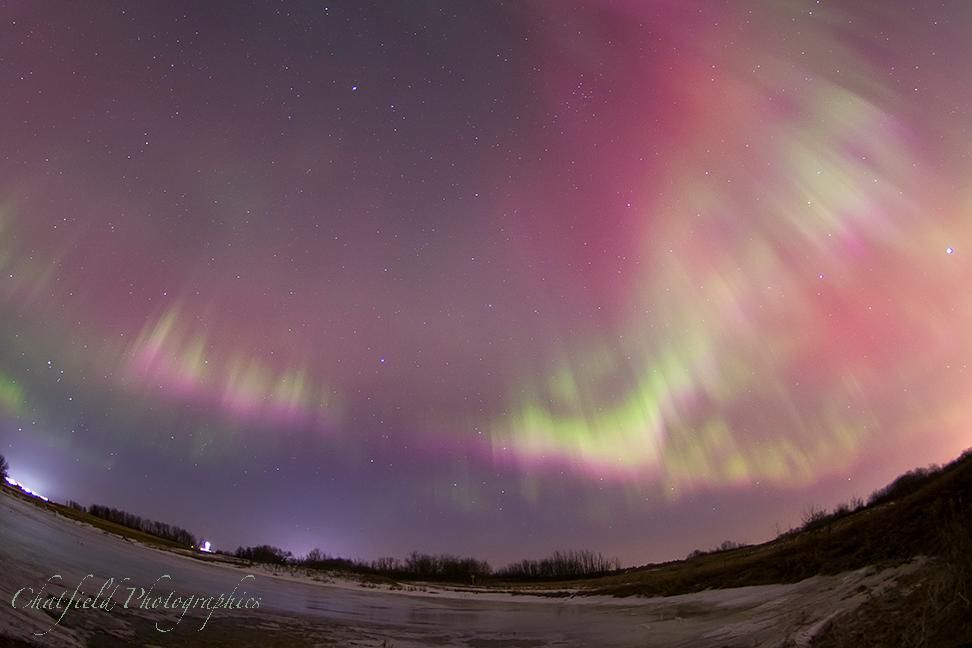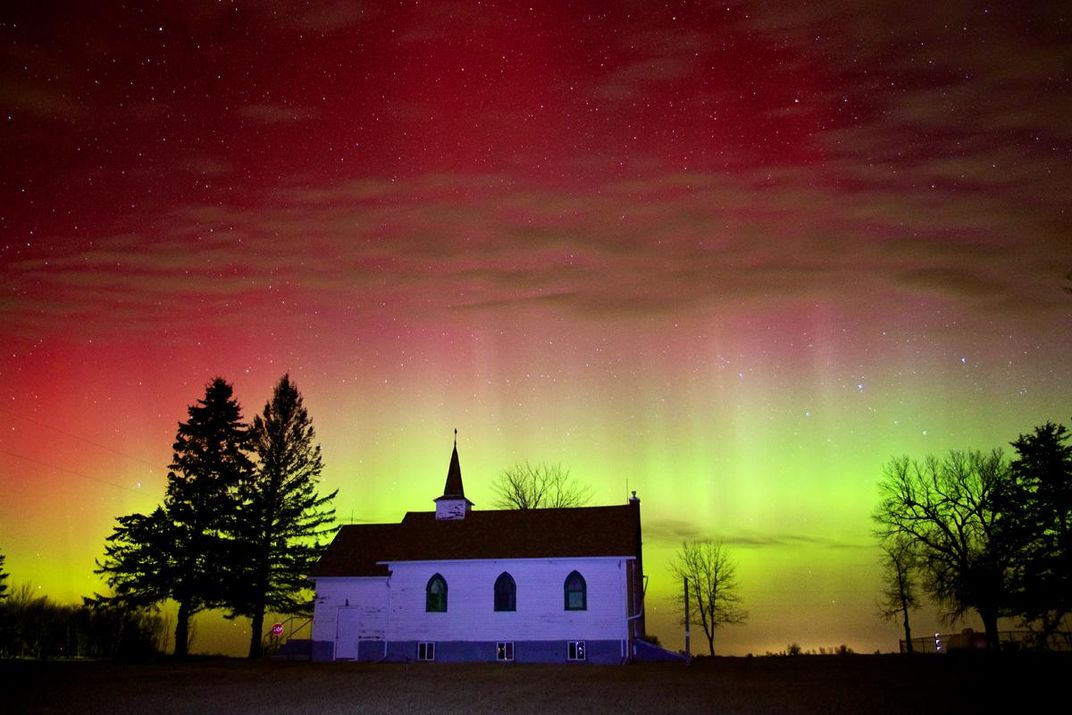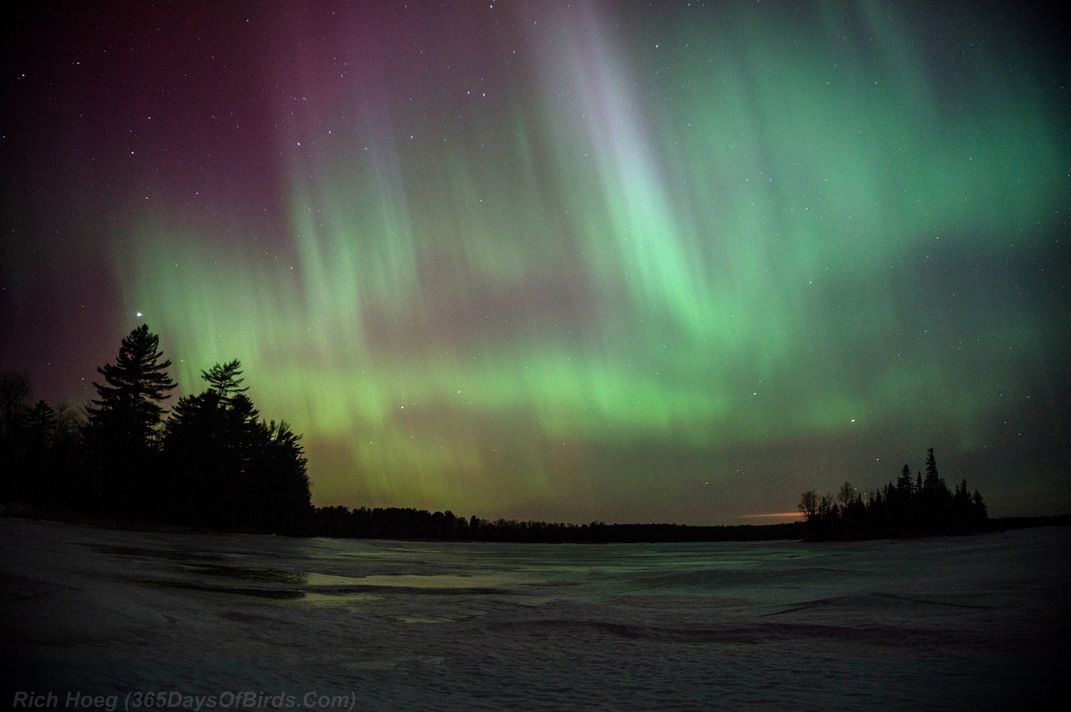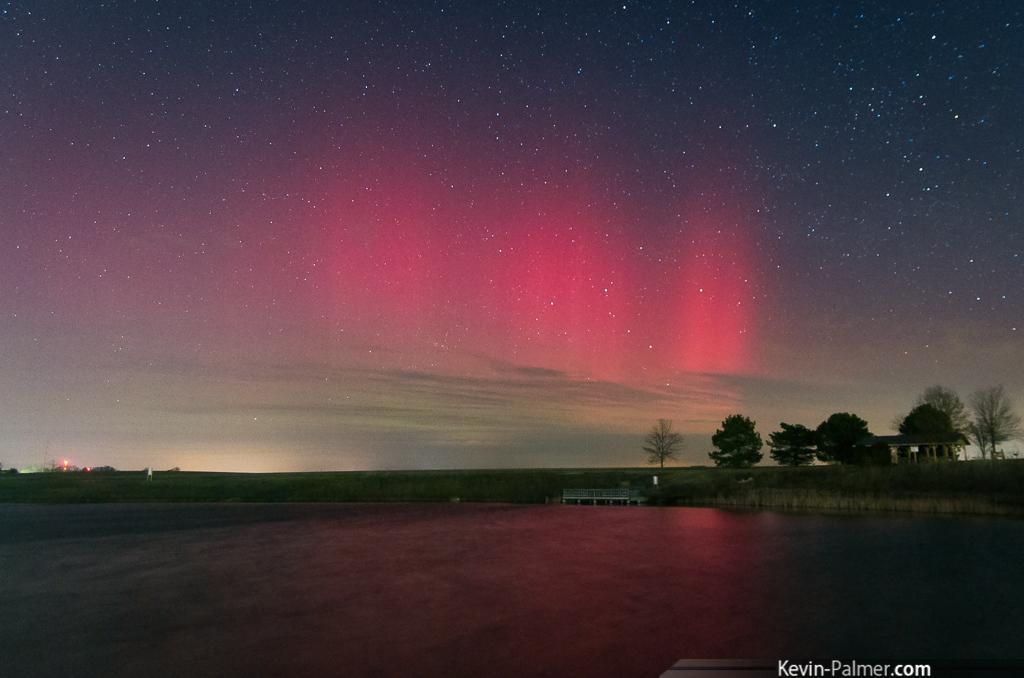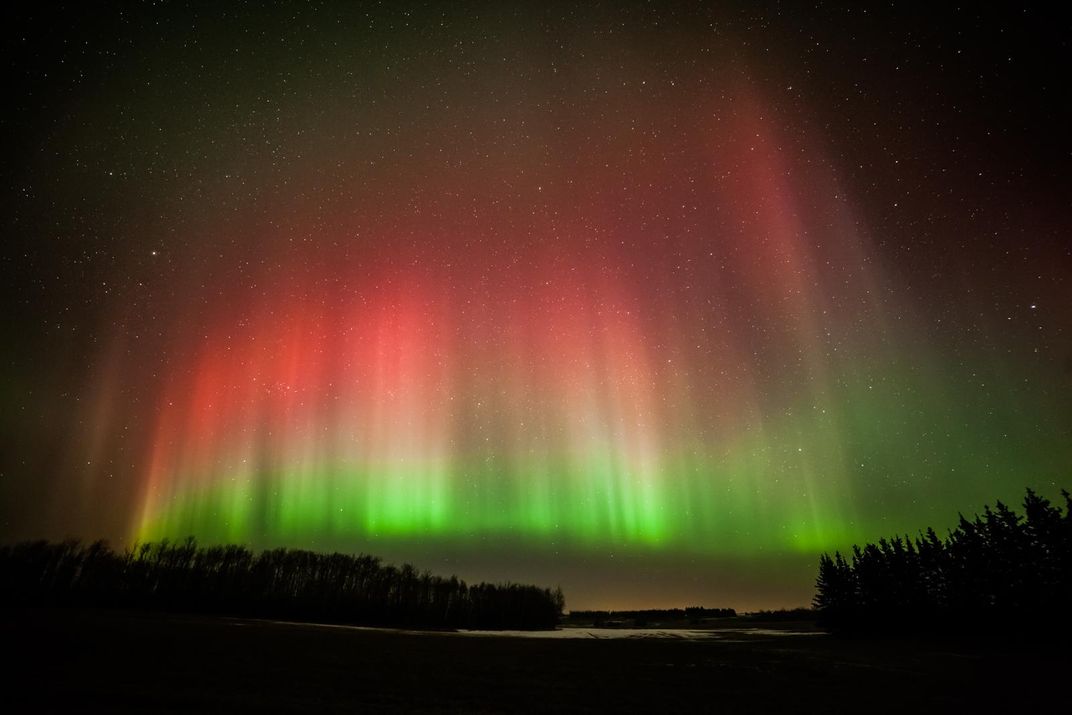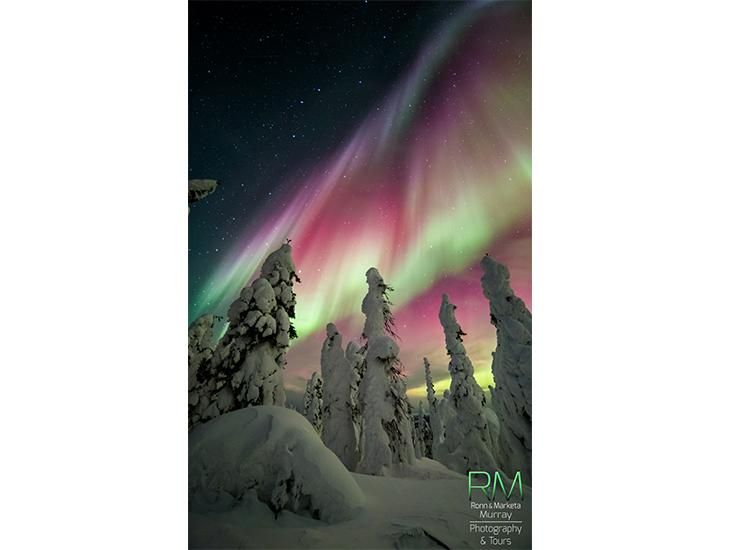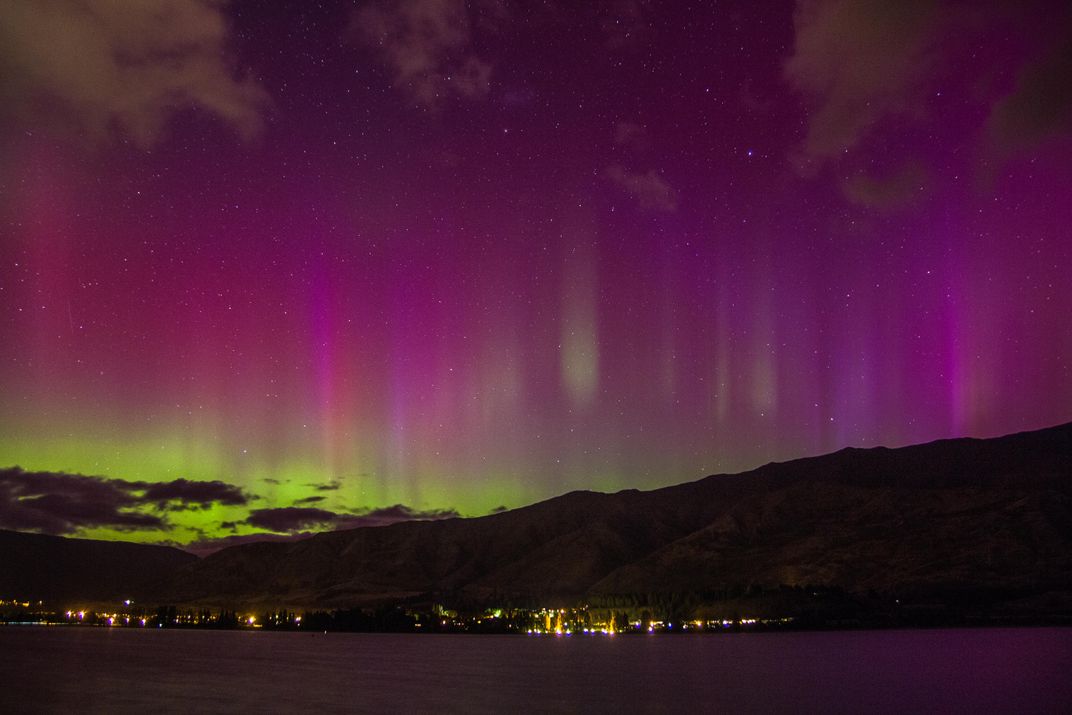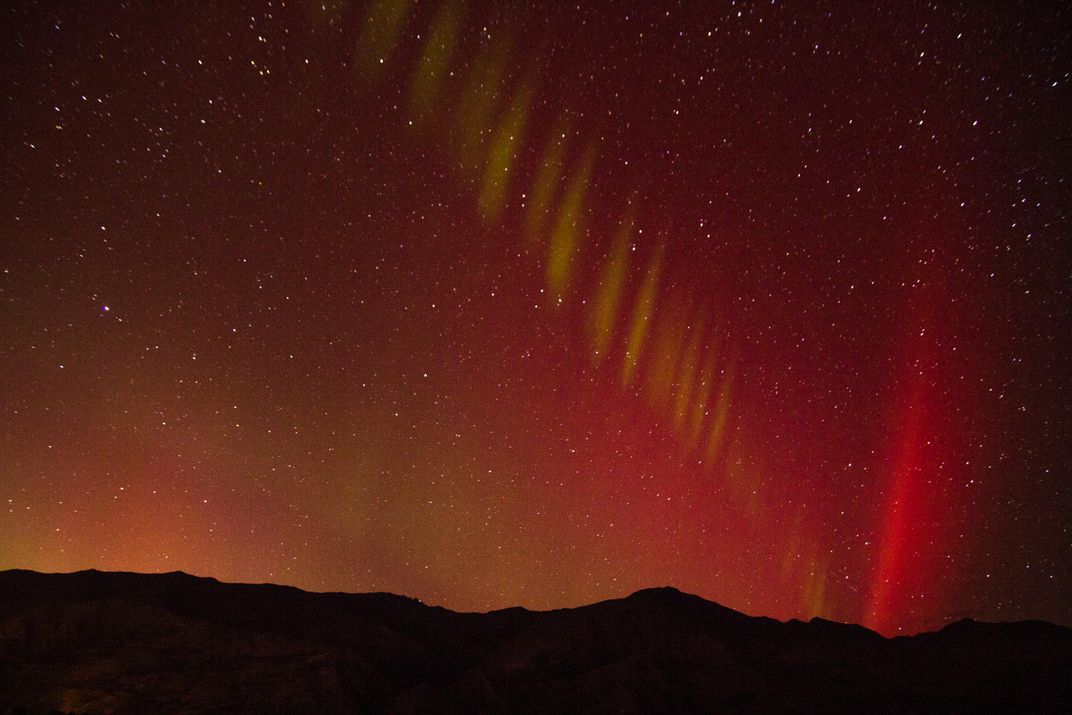Severe Solar Storm Paints the Sky Green on St. Patrick’s Day
A burst of particles from the sun is hitting our atmosphere and lighting up the night as far south as Illinois
Green beer and emerald rivers? Pah. How about a vibrant light show of green and red auroras dancing across the night sky. Earth is currently experiencing a "severe" solar storm, probably due to clouds of charged particles that came racing off the sun on March 15. When high-speed particles from such coronal mass ejections, or CMEs, hit our atmosphere, they excite molecules of gas in the air and trigger brilliant displays of lights, most commonly around the Poles.
Data from NOAA's Space Weather Prediction Center shows that the current storm around the North Pole started off weak in the early hours of March 17, but then it quickly ramped up to a G4-class geomagnetic event (G5 is the most intense). This sparked northern lights that could be seen much farther south than normal—painting some skies with vivid greens, reds and purples in the wee hours of St. Patrick's Day. The exact colors seen depend on which types of gases are emitting light and how high they are in the atmosphere.
"The glow was visible to the eye even on the edge of town and even more amazing out in the country," Christian Begeman, who shot the aurora from South Dakota, told Spaceweather.com. NOAA forecasters say that the storm should remain strong for several hours and then taper off. But nighttime revelers at northern latitudes may get another good view of the St. Patrick's Day auroras, as the forecast calls for the storm to be at G1 levels through the evening and into the early morning of March 18, according to Universe Today.
Update, 9:53 p.m. ET: The Southern Hemisphere also got a dose of intense auroral activity from this storm, with splashes of color lighting up the skies over Antarctica and New Zealand. "The colors were insane," travel writer Liz Carlson tells me via Twitter. "In the Southern Hemisphere we get the reds and pinks but to have purple and green too was awesome!"
